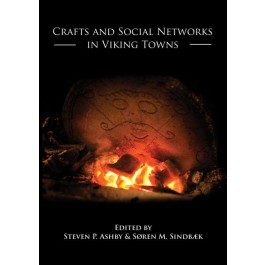New book: Crafts and social networks in Viking Towns
Professor MSO Søren M. Sindbæk explores what crafts can tell us about urban networks in the past.

What if archaeology could study directly how people in the past learned and transferred knowledge and skills – the way an anthropologist might do among a living group in order to understand their social networks? In most cases, there is no way to do so, but one particular group of people mark an exception.
Ancient craft-workers practiced highly personal expertise, passed down from local masters, or learned during travels, from visiting foreigners, or by trying to copy exotic objects. Besides, their work often had a very special feature: It was messy, leaving heaps of garbage for archaeologists to study.
A new book explores just what this evidence might tell us about some of the places where crafts were practiced most intensely: in towns and cities. Steven P. Ashby and Søren M. Sindbæk have assembled a team of some of the world’s leading experts in Viking-age crafts, to discover how the rich evidence excavated from early North European towns such as Ribe or York reflects the development and exchange of technology during the Viking maritime expansion.
“Crafts in Social Networks in Viking Towns”, just published by Oxbow books, brings the first-ever panoramic study of how potters, ironsmiths, comb makers, weavers and jewellers interacted in early urban communities, and the factors that shaped their interactions. Ideas and skills, it turns out, did not spread in the same way among male and female groups, nor did they move in the same way in Scandinavia as in the British Isles. These and many other points chart new connections in the Viking world, and raise new perspectives and questions for research into early urban networks.
